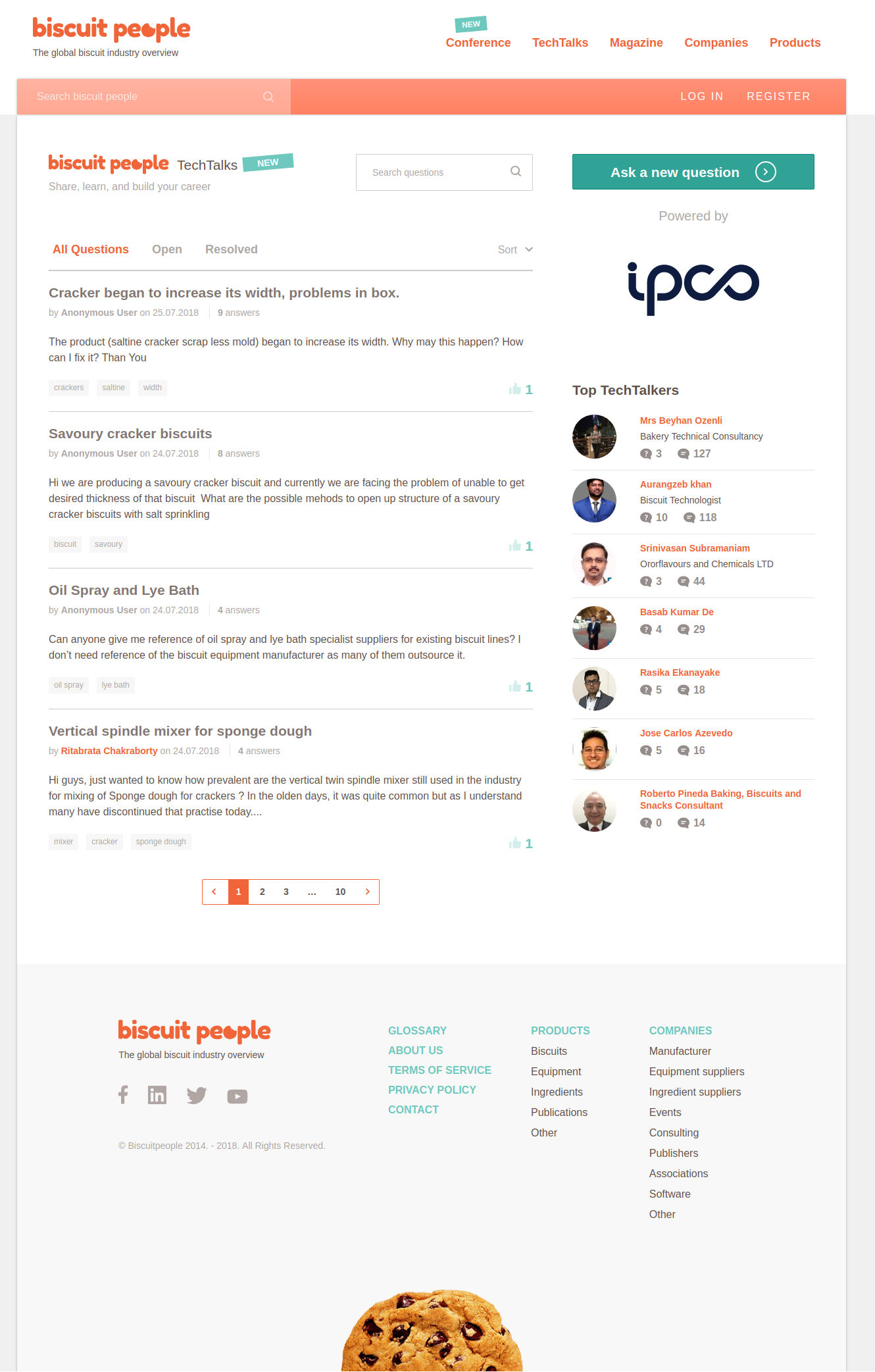How to build a community for your product?
Let’s say you have a blog, website, or valuable product for a specific niche community. You post quality content as often as possible. People read the content and share it on social media if it’s good, entertaining, or valuable.
You also want to build a community, but how do you get people to engage in the community? In the end, how do you make a community for your product? Social networks are great for sharing and growing the reach of your content.
But wait, everyone uses Instagram, Facebook, Twitter, or Reddit. What’s wrong with it? If I follow a specific community, you can easily see who posts the most. Even if you don’t remember the name, you remember the profile image on Facebook of a person who comments a lot, leading to ‘Oh, I saw that guy comment before’ moments.
If you follow someone on Twitter, usually, you can quickly get a sense of who is engaging with who after a few tweets. How often did you see a cool post on a Facebook page you like and saw a wall of comments where someone tagged one or more of his friends, and then the comment chain becomes an internal joke between them.
If you like to comment on blog posts, how often do you start a conversation with a random stranger that ends up really heated? Maybe you argue, or learn something new, but don’t you sometimes wish to talk with that person more?
I don’t mean that Joe or Jane Doe specifically, but in general, if you care about some topic – wouldn’t you like to talk with someone about it? On Reddit, every thread get’s upvoted, same with any comment, and the best content most of the time gets your attention because people choose what they think is relevant. It’s a great idea in theory, but the problem is that Reddit is too big; comment chains often end up as memes or get sidetracked.
So what’s missing and how to build a community for your product?
To be sincere, this is probably wholly subjective. Maybe nothing. But I think it misses some reputation-building system. Facebook pages, Instagram profiles, and Twitter profiles build community, but not in the same way.
Much information easily gets lost in all the chatter and noise of hundreds or thousands of user posts. When I was a kid, a lot of time, if I were interested in some topic, I would go to the forum for that particular subject, and I could always find loads of people who liked to talk about what they were interested in.
But since we are talking about the internet, and you definitely can’t trust everything you read online, forums were great because they had some reputation tracking system. I remember those badges or stars under the user’s nickname and the post count below the user’s profile picture.
We can say that those two things are arbitrary and subjective. If you are on good terms with the Admins of some forum, you can easily get a badge. Post count is – well, your ability to spam constructively.
But if you came to a new site in 2021, glanced at forum topic, saw a post of 100 to 200 words from a user who has a good profile picture (not even his picture, just something that is memorable), saw he wrote 5000 posts on that forum, had a badge that said ‘Legend’ and that he joined the forum in 2006.
Even if it’s all subjective and doesn’t guarantee anything, wouldn’t you be a little more inclined to read what that person had to say or visit that forum in general? I personally would, of course, IF I’m interested in the general topic.
I think that feeling of talking to someone who at least seems (we can never know for sure, that’s just the nature of the internet) to know what he’s talking about, and the types/talks with passion – isn’t that worth reading?
Of course, we now have likes, thumbs up, upvotes, karma associated with posts, but those are just numbers. They are missing – to me at least – that human element. Do you ever feel like you are the only person on Reddit who is not a bot?
This brings me to the cons of implementing QA sections. The first one is that you need to put more time into engaging and moderating the community. There is no way around it. It’s the cost of doing business, but it’s mostly upfront, at the start where you need to build the community in the right way, and then at a certain point, if you did a good job – people like to contribute to moderation.
The second one is that you don’t control the content if something gets visibility on your page. Even if you didn’t write that content, people would associate that content with your page. That’s where moderation comes into play.
The third one is entirely optional. For example, if you build a QA section for your products, and people contribute, and then at some point, you change the product, previous questions and answers can still be associated with a new product, even if they aren’t the same product. To be clear, I’m sure there are more cons that I haven’t thought of yet.
What are the good sides of building a community for your product?
The first one is the most obvious. If you have a community, you always have a certain base of people that will read, buy, or somehow bring value to your business. Second, it’s that it brings value to everyone involved. The person asking the question will most likely get an answer to his question from someone.
Someone who knows a lot about a question will get the satisfaction of helping, or at least feeling smart. I mean, we all like to talk about ourselves and what we know. If questions show up a lot or are unanswered for a long time, you get free content inspiration.
When you build a community for your product, keep in mind that a strong community will always have people willing to contribute back, either through moderation, writing content, helping with tech stuff, or whatever is needed.
The title of this blog post is quite misleading. What do questions and answers have to do with communities? Well, I think they both operate on the same underlying principles. But since I’m a developer, we need to talk about implementations of QA sections, so the difference between the QA section and general community building becomes blurry. In the end, it is not really important how you call this section. It’s only necessary that it brings value to everyone.
Build a community for your product
Facebook Groups
Facebook groups are the easiest solution to build a community for your product. You can get a fully working group in 15 minutes or less. Most people already have a Facebook account, so the barrier of entry is low.
The best thing is that people use their actual names and use their authentic images as profile photos. But the biggest problem I see is that you can still easily get lost in some post comments.
Subreddits are also really easy to create. Reddit already has an extensive user base. People can directly upvote or downvote both threads and comments, making it easy to use as a QA section.
But the biggest takeaway is that you only see the account’s username, which takes away from the feeling of community. You are not sure who you are talking to.
Old school forums
Old school forums are the most flexible off-the-shelf solution. But you do have to know how to deploy it, and you have to take time to design(or buy) a theme, create the boards, engage in the community in the early stages. And that takes some time. But when you build a strong community in an old-school forum, it stays there.
There is always that off-topic thread where people talk about how the car broke down for no reason, such as football games or sharing videos. End-users have to create an account to post and set up their profile, but you can always use social login features to speed up that process.
Custom solution
The most time-consuming and possibly most rewarding solution is a custom solution. It is pretty expensive because you need to invest at least time and resources if you can’t implement it yourself.
But it’s most rewarding because it’s most customizable and could better fit your already existing web. We did it for a long time client of ours, for his biscuit industry web.
Take a look at it in the photo below, or check it out live at biscuitpeople.com:

How does Questions & Answers section work?
Very simple. End-users have to have an account to post. You can open a question or answer a question. People who opened a question can close the question and select one answer to be shown as the accepted answer.
There is a feed of new questions as well as resolved ones. And the best feature, in my opinion – on the right side of the section is a list of the seven most active users, depending on the number of questions and answers they have given. So just with a glance at questions, you know who is most active in the community. It’s not feature-rich, to be honest, but it gets the job done.
So, what’s the point of this wall of text? To present you the best ways of building a community for your product. People like to talk about what they know. It isn’t easy to implement since it takes time to know how to build a community for your product, but it will all be worth it once you get there.
How do you build a community for your product? Write to us at hello@asynclabs.co.
